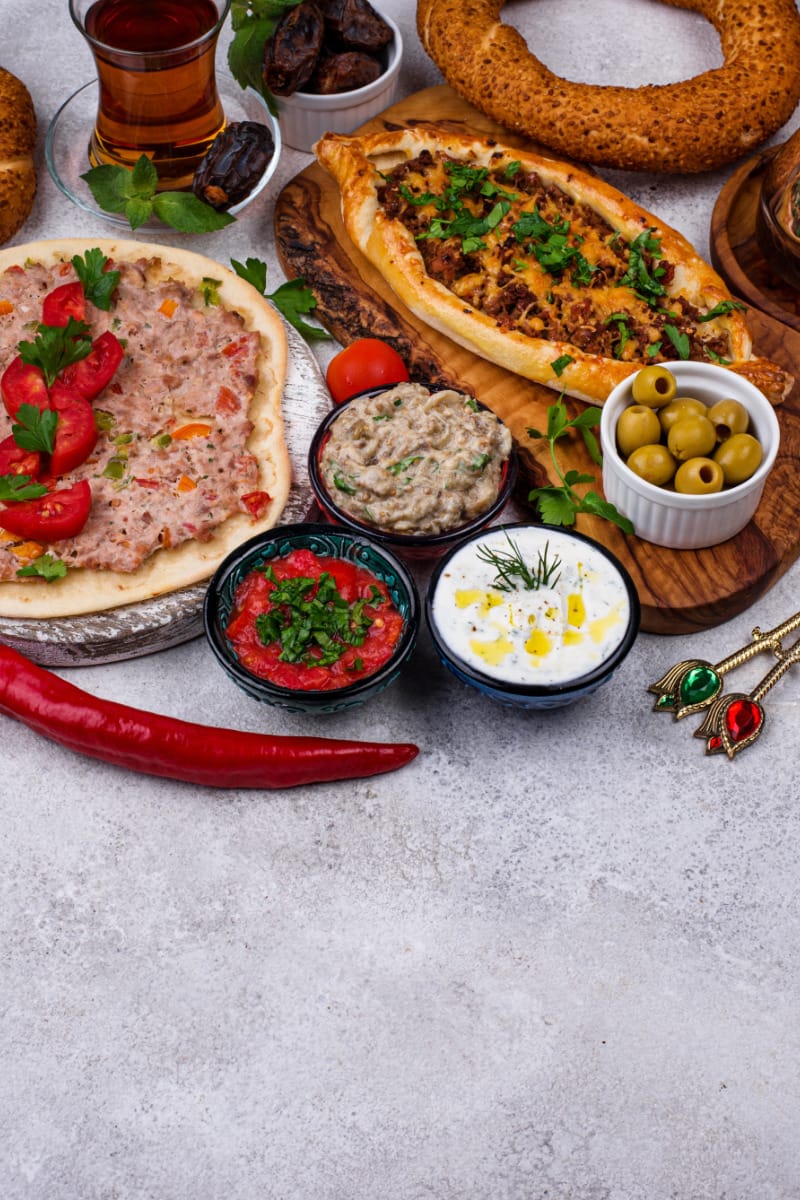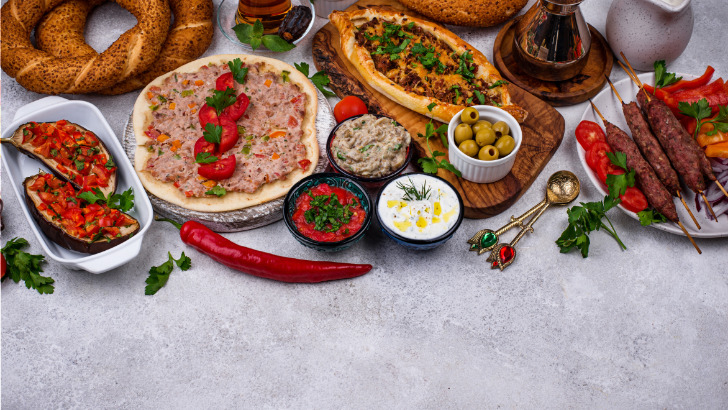From aromatic spices to exotic ingredients, Middle Eastern cuisine is known for its bold and vibrant flavors. But what happens when you’re missing a key ingredient or want to switch things up? Fear not, because we’ve got the download on spice substitutions that’ll help you switch out ingredients in your favorite recipes perfectly.
Read on for the spice substitution tips that’ll ramp up the quality andall flavors of your Middle Eastern dishes.
Spice substitution guidelines
Let’s face it: Spice substitution is an art form. Get it right and your dish is better than you could have expected. Get it wrong and you have a disappointing meal on your hands.
To increase your chances of experiencing the better-than-expected outcome, here are a few general guidelines to follow.
1. Adjust for dried vs. Fresh
Dried spices deliver far more flavor by volume because they don’t contain water. You must accommodate for that when using a dried spice in lieu of a fresh one. Start with one-quarter the recommended amount and then adjust according to taste.
2. Be strategic about the flavors
To choose the right substitution, it helps to understand the intended flavors of the dish. If you are substituting for the dish’s primary spice, know that you can’t replicate the end result with a different seasoning — but you could create something even better! Likewise, if you’re substituting for a secondary spice, opt for a more subtle alternative that’s going to mesh well with the other seasonings.
3. Add spices earlier in the recipe
With Middle Eastern cuisine, it’s common to add spices early in the cooking process. This allows the flavors to mellow and blend into that lovely layered taste profile. Adding spices late in the process may result in a harsher flavor.
Keep this in mind as you substitute. Adding replacement seasonings earlier in the recipe may contribute to a better dish.
4. Start with less
When uncertain, add small measurements of your substitute seasonings until you reach a nice flavor profile. It’s better to tread lightly than risk a dish that falls flat or overwhelms with spice.
5. Taste and adjust
In a similar vein, taste and adjust whenever you’re working with spices — and especially when you’re substituting.
6. Be careful with chili peppers
Exercise caution with chili peppers. There are many pepper varieties, and they can range wildly in flavor and spice profile. If you’re unsure, compare the Scoville heat rating of the chili you have vs. the chili recommended in the recipe. Then adjust the amount of your substitution accordingly. Taste, and adjust again.
As an example, Aleppo pepper is commonly used in Middle Eastern recipes. You don’t want to swap in, say, cayenne for Aleppo directly — because cayenne is about twice as spicy as Aleppo. You’d have to use less cayenne or mix it with something else to moderate the heat level.
Popular middle eastern spice substitutions

Now let’s cover some specific substitutions for common ingredients in Middle Eastern cuisine.
- Allspice: You can substitute allspice with a homemade mixture. Use equal parts cinnamon, cloves, and nutmeg.
- Cardamom: Try substituting cardamom with ginger and nutmeg and a dash of allspice. Taste and adjust.
- Cumin: Cumin has a unique flavor that’s hard to replicate. It plays a primary role in chicken shawarma and other iconic Middle Eastern dishes. Still, you can create a delicious dish by using ground caraway, taco seasoning, or curry powder to substitute for cumin.
- Fenugreek leaves: Try spinach, kale, or parsley as stand-ins for fenugreek leaves.
- Sumac: Like cumin, sumac has its own flavor profile. You can’t exactly replicate its flavor, but you can use a complimentary spice to substitute for sumac successfully. Try Z’atar, tamarind paste, or lemon pepper.
Why substitute spices?
There are a few reasons why you need to or want to substitute spices. The big one is convenience. You’re about to roll up your sleeves and prepare mussakhan (roasted chicken with sumac) and you suddenly realize you have no sumac. If you’ve already prepped your chicken and other ingredients, you’re motivated to salvage the meal — which means finding a reasonable substitute for the missing sumac.
Other reasons to substitute spices include:
- Variety: You can change up the flavors and create whole new taste experiences simply by swapping out some spices.
- Customization: Maybe you don’t like cumin. That doesn’t mean you can’t eat hummus. Simply leave out the cumin and use paprika or a dash of coriander instead. An easy substitution allows you to customize your culinary creations to suit your tastes and preferences.
- Budget: Some recipes call for exotic, expensive spices. Maybe you don’t want to spend the money, especially if the remaining, unused spice will sit in your pantry for the rest of time. Swapping in a cheaper, more common spice keeps your food spend efficient.
- Time efficiency: When your market is out of the spice you need, you have to decide: Substitute? Or drive all over town looking for coriander? Nine times out of 10, I’ll pick the substitution over adding another errand to my list.
Substitution ideas to try
If creativity is your motivation, here are some fun substitution ideas to try. They all replace a common spice with something more interesting. Use them to bring a Middle Eastern flair to your everyday recipes.
- Use cumin instead of smokey paprika or vice versa. I like to season baked potato wedges with smokey paprika but swapping in cumin also produces a terrific result. Likewise, you could try paprika in your favorite taco seasoning recipe instead of (or alongside) cumin.
- Use cardamom instead of cinnamon. The flavor of cardamom is more subtle than that of cinnamon. Even better, cardamom goes nicely in sweet and savory dishes.
- Use sumac instead of lemon juice. Sumac’s tangy zest breathes life into any dish. Plus you get the added benefit of sumac’s visually striking, deep-red hue.
Spice substitutions for convenience and fun
Sometimes you have to swap in spices in your recipes — and sometimes you just want to. Whether you’re substituting for convenience or for fun, you’ll want to start with a conservative measurement, then taste and adjust. You’ll also benefit from keeping a substitution journal. Note which spice swaps you enjoyed and which you didn’t.
Stick to those guidelines and you can learn to sub in spices like a pro.
